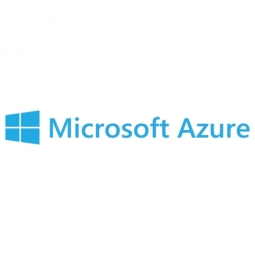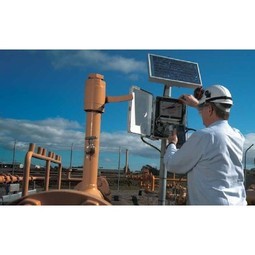FortisAlberta Prioritizes Worker Safety on Power Platform, Boosting Productivity and Earning Key Tech Award

Customer Company Size
Large Corporate
Region
- America
Country
- Canada
Product
- Power Apps
- Power BI
- Azure
- Azure SQL Database
- Azure Blob Storage
Tech Stack
- .NET Core
- Azure App Service
- Microsoft Graph
Implementation Scale
- Enterprise-wide Deployment
Impact Metrics
- Productivity Improvements
- Customer Satisfaction
- Digital Expertise
Technology Category
- Platform as a Service (PaaS) - Application Development Platforms
- Analytics & Modeling - Real Time Analytics
- Application Infrastructure & Middleware - API Integration & Management
Applicable Industries
- Utilities
Applicable Functions
- Field Services
- Business Operation
Use Cases
- Predictive Maintenance
- Process Control & Optimization
- Remote Asset Management
Services
- Software Design & Engineering Services
- System Integration
About The Customer
FortisAlberta Inc. is a large energy company based in Canada, delivering safe and reliable electricity service to more than a half-million residential, farm, and business customers across central and southern Alberta. The company operates in 240 communities across 124,000 kilometers (7,700 miles) of power lines. FortisAlberta’s team comprises more than 1,100 employees, including 350 first-line workers who need to be kept safe from preventable injuries. The company is committed to ensuring the safety of its workers, particularly those working on power lines, by implementing robust injury prevention plans (IPPs) before any work commences at a site. FortisAlberta has a strong focus on safety and innovation, as evidenced by its recent recognition with Canada’s Safest Employers Award for Most Innovative Use of Safety Technology for 2021. The company has embraced digital transformation to streamline its operations and improve safety measures, leveraging Microsoft’s Power Platform to transition from a paper-based process to a digital solution for managing IPPs.
The Challenge
With 350 front-line employees working on power lines across the province, injury prevention is an enormous priority for FortisAlberta. Thus, before any work commences at a site, an injury prevention plan (IPP) must be created to identify the risks and hazards staff need to be aware of and the actions they must take to stay safe. This plan must remain dynamic throughout the lifecycle of the project site, as any change to the job could introduce new risks, requiring new plans of action. Before adopting a digital approach, FortisAlberta used a paper-based system to complete and manage IPPs. Supervisors had to fill out paper forms and send them by email to the Safety department within 30 days of project initiation. Recordings of meetings were captured on handheld audio recorders and cross-referenced with the paper forms during random periodic checks or following an incident. To share the IPPs, employees took photos or made photocopies of the completed forms and sent them for site auditing. This made it challenging to pull information together in time to be reviewed at team safety meetings. The paper-based process created several challenges. Handwritten IPPs were not always legible, which made it difficult to record accurate information. The check boxes on the IPP form did not accurately reflect the job’s scope of work, its roles and responsibilities, or its hazards and barriers. The paper forms required double entry, necessitating additional administrative work. And it could take as long as two weeks before forms got to the head office, if they didn’t get lost along the way.
The Solution
It was clear that moving from a paper-based process to a digital solution would alleviate several pain points. With FortisAlberta’s IT leadership deeply invested in Microsoft’s technology and product stack, Power Platform seemed like the perfect place to start. To prove the technology could meet the requirements for this use case, FortisAlberta teamed up with digital partner Fidelity Factory, a Microsoft Gold Partner with deep experience using the Power Platform to empower business transformation for its clients. Fidelity Factory leveraged the rapid development capabilities of Power Apps to create a quick proof of concept. Its successful introduction led to an end-to-end solution being built in just two months. The completed solution was deployed in the fall of 2018 to a pilot user base of 220 daily users. The following spring, it was introduced to the FortisAlberta’s medium- and high-risk employees, as well as their managers and directors—all of whom adopted the digital IPP solution immediately. The new process starts before work begins at a site. Site supervisors create an IPP, identifying important information, as well as work hazards and mitigations, using a custom-built .NET application. At the work site, a Power Apps canvas app enables the supervisor to view and edit the relevant IPP for their site. The app, which runs on the supervisor’s personal mobile device, allows them to record audio so that their review of the IPP can be stored as an audio record. They can also use the app to record safety meetings and easily associate the recordings with the relevant IPPs for easy review. Moreover, the IPP mobile app works both online and offline, allowing users to work uninterrupted regardless of connectivity at their location. The visually appealing and user-friendly interface—enabled by Power Apps—facilitates quick and easy reviews of IPPs. And linking audio recordings to an IPP is simple and straightforward.
Operational Impact
Quantitative Benefit

Case Study missing?
Start adding your own!
Register with your work email and create a new case study profile for your business.
Related Case Studies.

Case Study
IoT Solutions for Smart City | Internet of Things Case Study
There were several challenges faced: It is challenging to build an appliance that can withstand a wide range of voltage fluctuations from as low at 90v to as high as 320v. Since the device would be installed in remote locations, its resilience was of paramount importance. The device would have to deal with poor network coverage and have the ability to store and re-transmit data if networks were not available, which is often the case in rural India. The device could store up to 30 days of data.

Case Study
Automation of the Oguz-Gabala-Baku water pipeline, Azerbaijan
The Oguz-Gabala-Baku water pipeline project dates back to plans from the 1970’s. Baku’s growth was historically driven by the booming oil industry and required the import of drinking water from outside of the city. Before the construction of the pipeline, some 60 percent of the city’s households received water for only a few hours daily. After completion of the project, 75 percent of the two million Baku residents are now served around the clock with potable water, based on World Health Organization (WHO) standards. The 262-kilometer pipeline requires no pumping station, but uses the altitude differences between the Caucasian mountains and the capital to supply 432,000 m³/d to the Ceyranbatan water reservoir. To the people of Baku, the pipeline is “the most important project not only in 2010, but of the last 20 years.”

Case Study
GPRS Mobile Network for Smart Metering
Around the world, the electricity supply industry is turning to ‘smart’ meters to lower costs, reduce emissions and improve the management of customer supplies. Smart meters collect detailed consumption information and using this feedback consumers can better understand their energy usage which in turn enables them to modify their consumption to save money and help to cut carbon emissions. A smart meter can be defined in many ways, but generally includes an element of two-way communication between the household meter and the utility provider to efficiently collect detailed energy usage data. Some implementations include consumer feedback beyond the energy bill to include online web data, SMS text messages or an information display in consumers’ premises. Providing a cost-effective, reliable communications mechanism is one of the most challenging aspects of a smart meter implementation. In New Zealand, the utilities have embraced smart metering and designed cost effective ways for it to be implemented. The New Zealand government has encouraged such a move to smart metering by ensuring the energy legislation is consistent with the delivery of benefits to the consumer while allowing innovation in this area. On the ground, AMS is a leader in the deployment of smart metering and associated services. Several of New Zealand’s energy retailers were looking for smart metering services for their residential and small business customers which will eventually account for over 500,000 meters when the multi-year national deployment program is concluded. To respond to these requirements, AMS needed to put together a solution that included data communications between each meter and the central data collection point and the solution proposed by Vodafone satisfied that requirement.

Case Study
NB-IoT connected smart meters to improve gas metering in Shenzhen
Shenzhen Gas has a large fleet of existing gas meters, which are installed in a variety of hard to reach locations, such as indoors and underground, meaning that existing communications networks have struggled to maintain connectivity with all meters. The meter success rate is low, data transmissions are so far unstable and power consumption is too high. Against this background, Shenzhen Gas, China Telecom, Huawei, and Goldcard have jointly trialed NB-IoT gas meters to try and solve some of the challenges that the industry faces with today’s smart gas meters.

Case Study
British Gas Modernizes its Operations with Innovative Smart Metering Deployment
The UK government has mandated that smart meters are rolled out as standard across Great Britain by end of 2020, and this roll-out is estimated to create £14 billion in net benefits to the UK in consumer energy savings and lower energy generation demand, according to the Oxford Economics report, “The Value of Smart Metering to Great Britain.” While smart-metering systems have been deployed in many countries, the roll-out in Great Britain is unique because it is led by energy retailers, who have responsibility for the Electricity and Gas meters. The decision to have a retailer-led roll out was made by DECC (Department of Energy and Climate Change) to improve customer experience and drive consumer benefits. It has also led to some unique system-level requirements to support the unique local regulatory model.

Case Study
OneWireless Enabled Performance Guarantee Test
Tata Power's power generation equipment OEMs (M/s BHEL) is required to provide all of the instrumentation and measurement devices for conducting performance guarantee and performance evaluation tests. M/s BHEL faced a number of specific challenges in conducting PG tests: employing high-accuracy digital communications for instrumentation, shortening setup and dismantling time, reducing hardware required, making portable instrument setup, avoiding temporary cabling work and the material waste costs






